“And when Brahma produces the world anew… Collecting his mind into itself (Yoga willing), Brahma creates the four orders of beings …” (SD 1:456fn)

Temple of Apollo, Delphi
“Man, know thyself” read the inscription on the metope (MET-oh-pea) of the Apollo dedicated Oracular Temple at Delphi, its purpose being to remind any one entering the shrine of mysteries what the ultimate scope of his initiation (awakening) ought to be.

The Pythia, Isis Unveiled
Self-knowledge is the core and ultimate end of initiation. It can be achieved through perpetual effort to become detached from sense effects and personal impressions through an ethical course representing the Divine Law on earth.
The means to fulfill this goal is the mind joined to the heart, a link which cements the physical level of existence with the spiritual. “Self-Knowledge is of loving deeds the child,” says The Voice of the Silence.
Patanjali, the greatest codifier of the system of Self-knowledge known as Yoga Sutras, says that “Concentration, or Yoga, is the hindering of the modifications of the thinking principle,” where Yoga is the union of the material to the spiritual, or the union of the opposites. Yoga means “union.”
Man’s major deed and success is considered the focusing of the mind steadily on one single point or concept, so gaining wisdom and deliverance from the cycle of rebirth, and this is known as meditation or self-knowledge.
Pilgrimage To Tibet
 HPB’ s familiarity with Tibetan Buddhism as well as with esoteric Buddhist practices seems to be beyond doubt. A report by Margaret Cousins, “A pilgrimage in the Himalayas,” is confirmed by a Hindu sadhu, among other testimonies, that a Russian lady named Blavatsky had found the high teachers and received the Ancient Wisdom. (World Theosophy, Vol.1, Number 2, February 1930)
HPB’ s familiarity with Tibetan Buddhism as well as with esoteric Buddhist practices seems to be beyond doubt. A report by Margaret Cousins, “A pilgrimage in the Himalayas,” is confirmed by a Hindu sadhu, among other testimonies, that a Russian lady named Blavatsky had found the high teachers and received the Ancient Wisdom. (World Theosophy, Vol.1, Number 2, February 1930)
She managed to reach the hard-to-access Tibetan lamaseries after strenuous efforts, and hardships overcome with the help of her Masters. In a letter to an inquirer, who asked why she was sent to Tibet, HPB answered:
“True, there is absolutely no need of going to Tibet or India to find some knowledge and power ‘which are latent in every human soul’; but the acquisition of the highest knowledge and power require not only many years of the severest study enlightened by a superior intelligence, and an audacity bent by no peril, but also as many years of retreat in comparative solitude …” (see also The Extraordinary Life and Influence of Helena Blavatsky, by Sylvia Cranston, ch.6)
Buddha’s Secret Teachings
 In many of the mountain lamasaries, Blavatsky writes in The Secret Doctrine, “there are subterranean crypts and cave-libraries, cut in the rock…” She continues:
In many of the mountain lamasaries, Blavatsky writes in The Secret Doctrine, “there are subterranean crypts and cave-libraries, cut in the rock…” She continues:
“Along the ridge of Altyn-Toga, whose soil no European foot has ever trodden so far, there exists a certain hamlet, lost in a deep gorge. … Pilgrims say that the subterranean galleries and halls under it contain a collection of books, the number of which, according to the accounts given, is too large to find room even in the British Museum.”
Beneath his public moral teachings, she says, were instructions reserved for his disciples (Arhats.) These were taught “secret portions of the ‘Dan‘ or ‘Jan-na‘ (‘Dhyan‘) of Gautama’s metaphysics,” and “received their Initiation at the famous Saptaparna cave.” HPB further explains:
Dan, now become in modern Chinese and Tibetan phonetics ch’an, is the general term for the esoteric schools, and their literature. In the old books, the word Janna is defined as “to reform one’s self by meditation and knowledge,” a second inner birth. Hence Dzan, Djan phonetically, the “Book of Dzyan.”
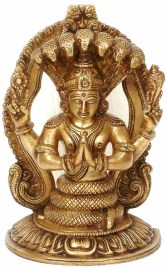
Patanjali
These mystical Stanzas of Dzyan are those upon which Blavatsky based her entire The Secret Doctrine.
Yoga Training
Raja Yoga, as she called it, the ultimate yoga, differentiating it from Hatha Yoga, was the way in which she perceived and understood the esoteric knowledge she lived and wrote about.
She could never have provided an esoteric teaching had she not, beforehand, undergone a training concerning the secrets of nature and existence – and after long personal effort, practice and experience. To her personal students she recommended reviewing each day in detail, and keeping a mental “Daily Life Ledger” to aid in clearing away the hindrances to meditation.
Her knowledge on meditation can be traced throughout her writings. The Dhyana ability she possessed, referred to by Patanjali (Book 3) as “the continuance of the attention” also called contemplation. By the word “Dhyana” is the knowledge of the mysterious laws of nature, and and what is obtained by Yoga training.
Trance
In the The Key to Theosophy , she says that wisdom can only be attained when in an ecstatic state— how the limited can get to know the limitless — cautioning that such a state cannot be reached through hypnotism, or physical and chemical means.
She viewed trances as harmful to the human psyche. It is rather conscious awareness that is required to reach godlike wisdom. In her teachings, “Mediums and Mediators“ and “The Dual Mind” and many others, she makes a strong effort to make obvious that the two aspects of human nature, as personality and individuality, are opposing aspects, and are expressed by different behaviors.
Ecstasy

Plotinus
One can only achieve true enlightenment through “ecstasy” as defined by Plotinus, and she quotes:
Real ecstasy was defined by Plotinus as “the liberation of the mind from its finite consciousness, becoming one and identified with the infinite.”
Meditation is silent and unuttered prayer or, as Plato expressed it, “the ardent turning of the soul toward the divine; not to ask any particular good (as in the common meaning of prayer), but for good itself — for the universal Supreme Good”

Plato
… Therefore, adds Plato, “remain silent in the presence of the divine ones, till they remove the clouds from thy eyes and enable thee to see by the light which issues from themselves, not what appears as good to thee, but what is intrinsically good.” (The Key to Theosophy)
The Raja Yoga Dance
 In Blavatsky Collected Writings 6, on “The God Idea”, Mme. Blavatsky comments:
In Blavatsky Collected Writings 6, on “The God Idea”, Mme. Blavatsky comments:
“…the highest Yoga is the concentration of mind upon God, even amidst the transaction of worldly affairs. This Yoga has been illustrated by a sloka given in my ‘Superiority of Hinduism,’ containing the beautiful comparison of the real yogi to a female dancer with a pitcher full of water upon her head, singing and dancing according to the strictest rules of music, but still preventing the pitcher from falling down. This best of all yogas, the real Raj yoga, is to be attained by long practice requiring constant and tremendous exercise of will-power as was done by Rajah Janaka.”
The initiation and tools she obtained at the Tibetan lamaseries, the fruits of inner knowledge, she in turn offered to humanity through her writings. They are the cornerstones of Theosophy.
Ironically, the first step towards initiation, given in The Voice of the Silence, is that: “the pupil must regain the child-state he has lost ere the first sound can fall upon his ear.” And we know how children love to dance!
Univeral Ethics
Practical Theosophy, referred to in The Key to Theosophy , is testimony to her belief in Ethics. The First Object of the Theosophical Movement, “To form the nucleus of a Universal Brotherhood of Humanity,” is the imprint of divine ethics onto our world.
Studying H.P.B.’s Diagram of Meditation, we can clearly detect the ethical purity the trainee must achieve; to set himself free from mental propensities; to awaken the consciousness of the Higher Self.
Mme. Blavatsky’s thesis on meditation is strictly based on the initiation and practice learned in Tibet. It surely agrees with what many Yogis say — that for facilitating the state of ecstasy called Samadhi, one has to submit physically to the greatest abstinence in food and drink — and mentally into an incessant endeavor to purify and elevate the mind.
Aspasia Papadomichelaki
Athens ULT




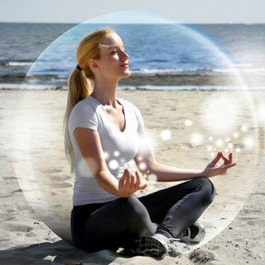
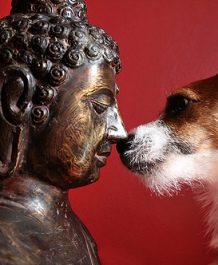 A
A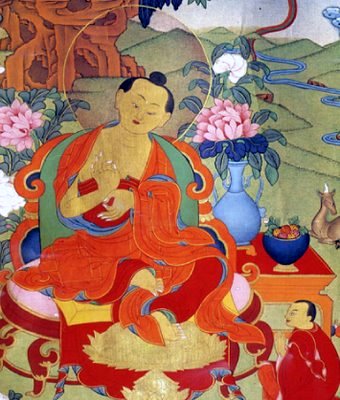
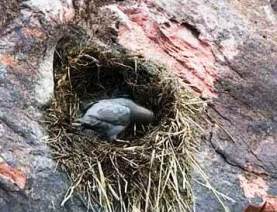




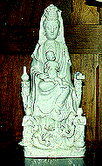
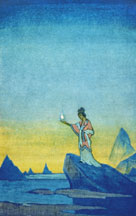
 © Kara LeBeau 2009 All rights reserved
© Kara LeBeau 2009 All rights reserved

 HPB’ s familiarity with Tibetan Buddhism as well as with esoteric Buddhist practices seems to be beyond doubt. A report by Margaret Cousins, “A pilgrimage in the Himalayas,” is confirmed by a Hindu sadhu, among other testimonies, that a Russian lady named Blavatsky had found the high teachers and received the Ancient Wisdom. (World Theosophy, Vol.1, Number 2, February 1930)
HPB’ s familiarity with Tibetan Buddhism as well as with esoteric Buddhist practices seems to be beyond doubt. A report by Margaret Cousins, “A pilgrimage in the Himalayas,” is confirmed by a Hindu sadhu, among other testimonies, that a Russian lady named Blavatsky had found the high teachers and received the Ancient Wisdom. (World Theosophy, Vol.1, Number 2, February 1930) In many of the mountain lamasaries, Blavatsky writes in
In many of the mountain lamasaries, Blavatsky writes in 


 In Blavatsky Collected Writings 6
In Blavatsky Collected Writings 6


